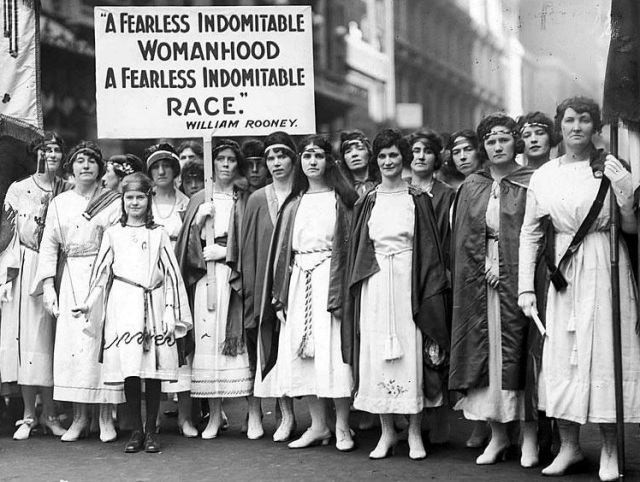
“Healer – Priestess-Elf serie” by `Eireen
“The Weisse Frauen’s themes are banishing, blessing, joy, protection, fertility and divination. Their symbols are any sacred symbol, forest items and the color white. Known as the ‘White Women’ of the German forests, these Goddesses are said to have been worshipped by ancient pagans and witches where they live – in the woods. In later times, people looked to them to predict the future, help with matters of fertility, and protect the land.
The unique festival of Kermesse dates back to pagan worship of the grove Goddess (and pagan gatherings in the woodlands). Traditionally, some type of sacred symbol is dug up and carried around town to renew blessings and happiness in all who see it. The ritual also banishes evil influences.
To follow this custom, plant a white stone or token in a flowerpot, garden, or lawn this year and next year dig it up temporarily to release White Women’s power. At the end of the day, return the token to the earth so they can protect your home or land and fill every corner of it with magic. Repeat this annually to continue the cycle!
Wear something white today to invite the Weisse Frauen’s protection on the figurative land of your spirit, and spend some time in the company of trees at some point. Meditate on the pagans, who weaved magic in such places, and on these Goddesses, who empowered the spells. As you do, listen closely to the voices of the trees and see if they have a message for you.”
(Patricia Telesco, “365 Goddess: a daily guide to the magic and inspiration of the goddess”.)

“In German folklore, theWeiße Frauen, or Weisse Frauen (meaning White Women) are elven-like spirits that may have derived from Germanic paganism in the form of legends of light elves (Old Norse: Ljósálfar). They are described as beautiful and enchanted creatures who appear at noon and can be seen sitting in the sunshine brushing their hair or bathing in a brook. They may be guarding treasure or haunting castles. They entreat mortals to break their spell, but this is always unsuccessful. The mythology dates back at least to the Middle Ages and was known in the present-day area of Germany.
The association with the color white and their appearance in sunlight is thought by Jacob Grimm to stem from the original Old Norse and Teutonic mythology of alven (elves), specifically the bright Ljósálfar. These ‘light elves’ lived in Álfheim (part of heaven) under the fertility god Freyr. As mythology evolved, elves no longer lived in Álfheim (part of heaven) but lived on earth in nature. The White Women also may represent ancient beliefs in ancestral spirits or older native Goddesses and nature spirits. Jacob Grimm noted in particular they might come from Holda, ‘Berhta, white by her very name’ and Ostara. According to Grimm’s Teutonic Mythology and to the Mythology of All Races Series, the enchantment under which they suffer ‘may be a symbol of the ban laid by Christianity on the divinities of the older faith.’ Similar in name to the Witte Wieven of Dutch mythology, the Weisse Frauen may have come from the Germanic belief in disen or land wights and alven.” [1]

Patricia Monaghan writes: “The ‘white women’ of Germany and other northern European locations were said to be Goddess-worshipping witches who disappeared ages ago into the woods. They lived deep in the forests where they helped lost travelers, foretold the future and helped the earth produce its fruit by their ritual dances. Some say they were the ghosts of old Goddesses, enchanted by Christianity, seeking magic to release them into fuller life again” (p. 315).
“Jacob Grimm notes the image of the Weisse Frauen basking in the sun and bathing ‘melts into the notion of a water-holde [i.e. Holda] and nixe‘. The Weisse Frauen also have counterparts in both name and characterization in neighboring countries: In the Netherlands known as the Witte Wieven, and in France known as the Dames blanches.
There are also many legends in German Folklore regarding ‘Weisse Frauen’, which are actually equivalent to the legends of White Ladies; ghosts of the United Kingdom.”
Sources:
Monaghan, Patricia. The New Book of Goddesses and Heroines, “Weisse Frauen”
Wikipedia, “Weisse Frauen“.
Suggested Links:
Arrowsmith, Nancy. Field Guide to the Little People, “White Ladies” (p. 15).
Bell, William. Skaespeare’s Puck, and his folkslore, “Weisse Frauen, Belief In” (p.58).
O’Keeffe, Christine. Tartanplace.com, “Christine’s Faery List: Baobhan Sìth“.
Sacred-texts.com, “The Fairy Mythology: Celts and Cymry: France“.
Wikipedia, “Dökkálfar and Ljósálfar“.















